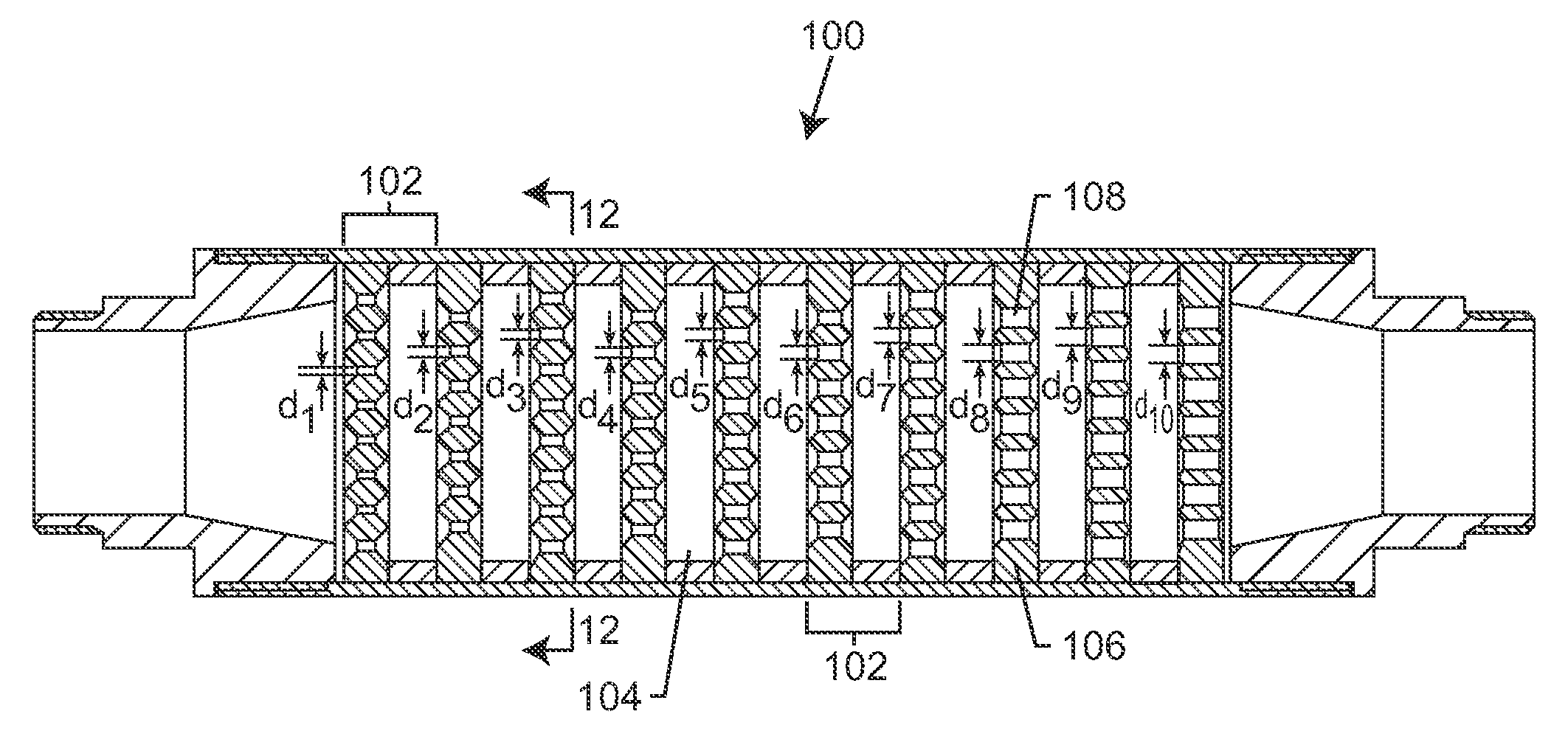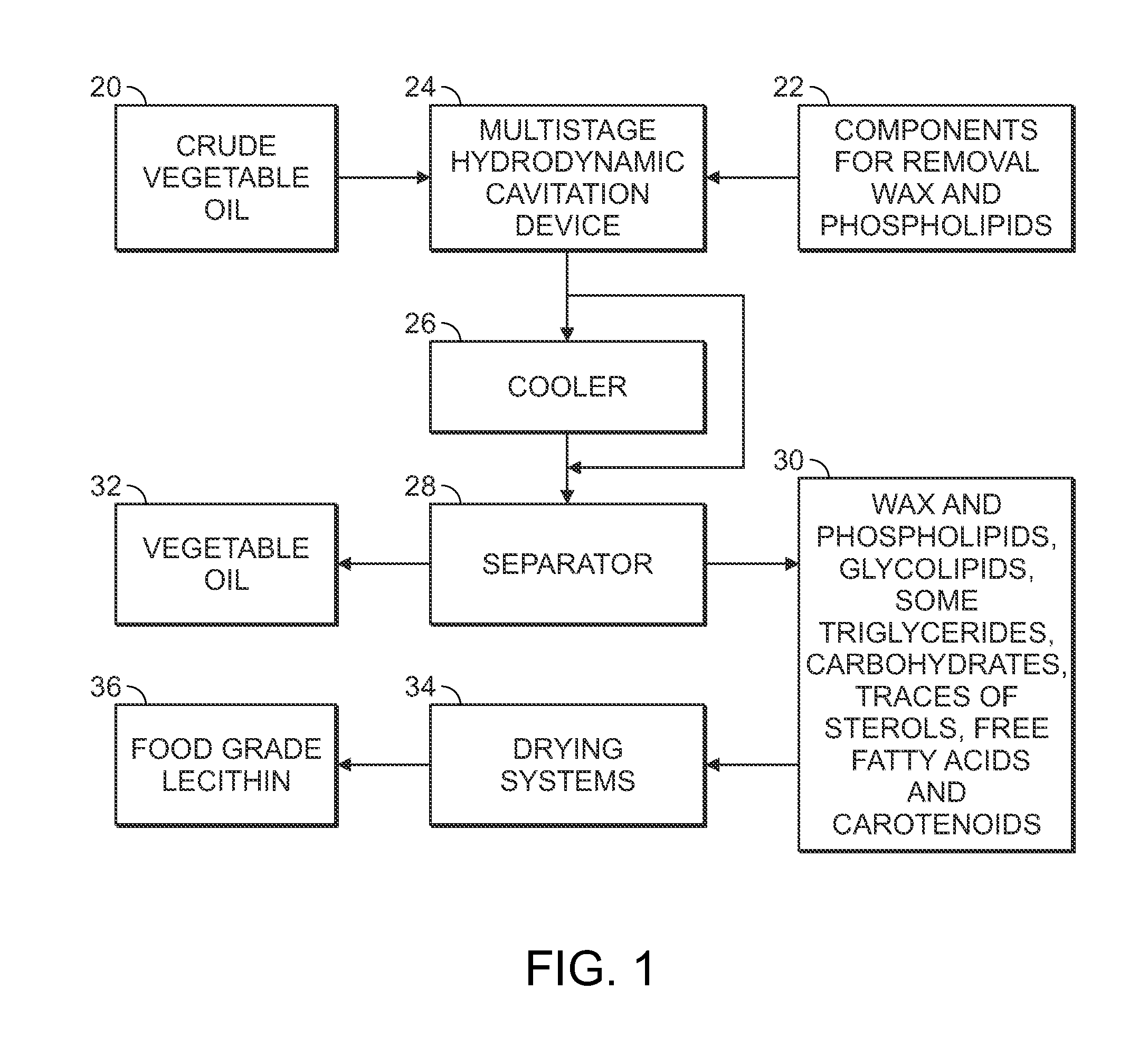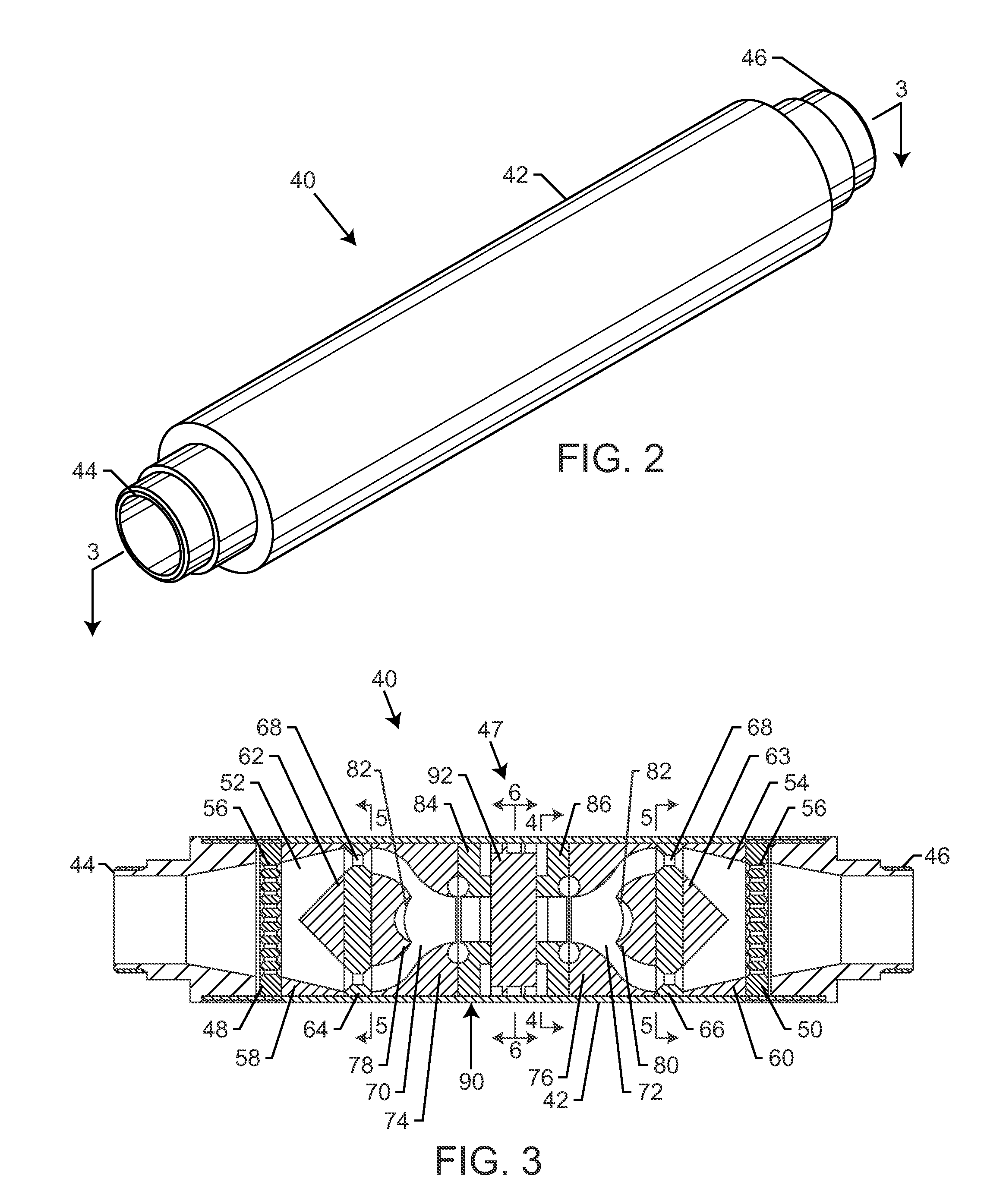Processes for removing waxes and phospholipids from vegetable oils and increasing production of food grade lecithin therefrom
a technology of vegetable oil and phospholipids, which is applied in the direction of fatty-oil/fat refining, chemical/physical/physicochemical processes, transportation and packaging, etc., can solve the problems of poor low temperature flow properties of vegetable oil, slow cooling is not energy-efficient, and solidification of oil, so as to improve the resistance of the cavitation device to corrosion
- Summary
- Abstract
- Description
- Claims
- Application Information
AI Technical Summary
Benefits of technology
Problems solved by technology
Method used
Image
Examples
example 1
Experimental Design
[0085]Feedstock Crude / water degummed sunflower oil from Argentina (supplied by Desmet Ballestra Argentina (“DBAr”));
[0086]Equipment: Trials were conducted in the pilot facilities of Cavitation Technologies, Inc. (“CTI”) in Chatsworth, Calif. (USA);
[0087]Samples: All the samples, which were sent in to Desmet Ballestra Group (“DBG”) R&D center for analysis, were processed through the nano-cavitation reactors during a series of cold refining trials. The sample numbers are given by CTI as continuation of the previous set of trials (see Lab Report 120113).
[0088]Nano-cold refining general procedure (as applied at CTI): Preheating of the sunflower oil to 180° F. (only for samples 15-17); addition of NaOH (as 10% aq. solution) and cooling of the mixture to 40° F. (4.4° C.); processing of the cold mixture through the nano-reactors (conditions not specified); maturation of the nano-processed mixture for a predetermined amount of time (no temp. control); and centrifugation o...
example 2
[0091]The nano-cavitation module was installed in the crude sunflower oil pipeline between the output of a hexane recovery system and the degumming centrifuge with the purpose of removing as much phosphorous as possible to increase Lecithin production and get low phosphorous sunflower oil for physical refining. In order to remove a greater quantity of gums, a solution of 100-300 ppm of citric acid is added to crude oil from the distillation and held in a maturation tank for 30 / 40 minutes, then 1-2% water is added “on line” and passed through the nano cavitator to go then to the centrifuge where gums are removed.
Results
[0092]FIG. 15 is a comparative table showing the phosphorous in crude sunflower oil before (water degumming) and after processing in the nano cavitator. The reported values are averages of multiple process runs. To further illustrate this, FIGS. 16 and 17 provide some detailed values of phosphorous content measured at the outlet of the centrifuge.
[00...
PUM
 Login to View More
Login to View More Abstract
Description
Claims
Application Information
 Login to View More
Login to View More - R&D
- Intellectual Property
- Life Sciences
- Materials
- Tech Scout
- Unparalleled Data Quality
- Higher Quality Content
- 60% Fewer Hallucinations
Browse by: Latest US Patents, China's latest patents, Technical Efficacy Thesaurus, Application Domain, Technology Topic, Popular Technical Reports.
© 2025 PatSnap. All rights reserved.Legal|Privacy policy|Modern Slavery Act Transparency Statement|Sitemap|About US| Contact US: help@patsnap.com



